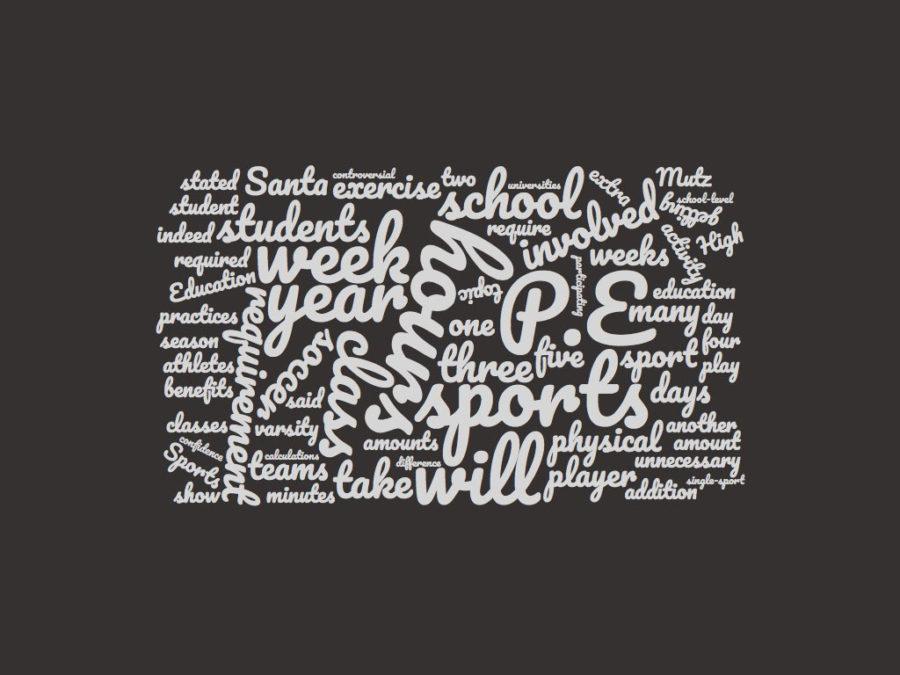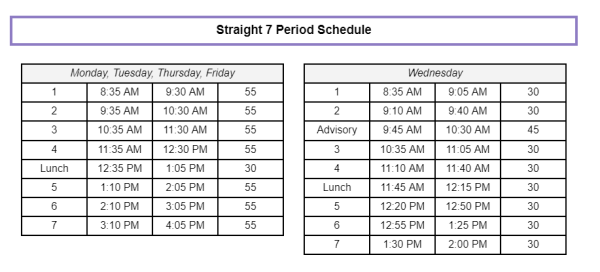School Sponsored Sports vs. Physical Education
March 10, 2017
The physical education requirements in American education have been a controversial topic for decades, with many wondering, Does P.E. really benefit the student? And while many will argue that the classes do indeed have a positive impact, should it still be required for student-athletes involved in one or more school-sponsored sports?
This has been an especially hot topic at Santa Fe High because it was decided last year that a year of P.E. would be a graduation requirement despite the fact that this year’s seniors were earlier told that they could fulfill their P.E. requirement by participating in a school-sponsored sport for three years. But now, athletes are required to take the class or they will not graduate.
However, according to Mr. Mutz, Santa Fe High’s assistant principal in charge of athletics, this was a school-level decision that will be rescinded next year. That means that only the class of 2017 will be affected by this rule.
This change has caused an uproar among students, with many labeling the changes as “unfair” and “unnecessary.”
Gabriel Lopez, a varsity soccer player at Santa Fe High, stated, “Sports should count for a P.E. credit as it will just take up an extra class in students’ schedules.”
Erick Sanchez, another varsity soccer player, said, “It is unnecessary to take P.E. because it is a lot of extra work when we practice for hours every day after school.”
Philip Balderamos, a sophomore tennis player, said, “I think it’s bad because it takes away from academics.”
Mr. Mutz stated that the New Mexico Public Education Department allows a student to be exempted from the P.E. requirement if he or she plays an NMAA-sanctioned sport. Going forward, however, the district will require two sports. (The requirement used to be three sports.)
At issue is the amount of physical activity involved in sports vs. P.E. classes. For example, in a single season of soccer, one could usually expect to participate in 90-minute practices five days a week, amounting to seven and a half hours a week for approximately 14 weeks in addition to at least a game one week with four or five of those occurring on a Saturday or Sunday. This amounts to 112.5 hours of activity in that specific sport.
A regular P.E. class amounts to about four hours of class a week, which does not include the time for getting dressed, which will take approximately 10 minutes each day before and after. For a whole year this would amount to 2.5 hours a week for 41 weeks only, which adds up to 102.5 hours for the year. Three weeks must be eliminated from this total for spring and winter break as well as another week for additional days off throughout the year. This totals 92.5 hours for the entire school year, 20 hours fewer than a typical high school soccer season.
If students are getting 20 hours more exercise from their sports teams, then why require them to be involved in a separate class? Moreover, these calculations only account for a single-sport athlete, not for those who play two or three sports.
In addition, those involved in sports represent their school at both their games and practices, which benefits the school and boosts confidence for the athletes, showing that their participation benefits more than themselves and even more than the teams they play on.
Research by notable sources such as the CDC, Columbia University, and the universities of Illinois, California and West Virginia show that physical exercise does indeed improve not only lifestyle but also academic performance in schools around the country. Studies show as little as 20 minutes of exercise for three to five days a week can make a difference. But students on sports teams easily surpass the daily and weekly recommendations.












